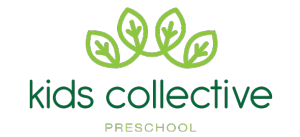The Reggio Emilia approach is an early childhood education philosophy based on the concept of the kid as an inventive and curious person who can learn and develop through collaboration with others, including parents, teachers and peers. Rather than considering the child to be a passive recipient of new knowledge, the Reggio approach lays emphasis on children who can learn by unlocking their unlimited potential.
The Reggio Emilia approach to early childhood education is not a ready-made program, but a process of maintaining learning in a supportive environment. At the Reggio preschool, teachers are highly aware of what children are taught about within their classrooms. A typical Reggio classroom is a pre-arranged studio filled with materials and facilities to help children proceed with their discoveries. Teachers are active careful observers in the process of learning. They closely interact with children and make notes of their talks and ideas, which serve as a backbone for arrangement of project work with kids. Each Reggio project is a fascinating journey, in which teachers invite children to get involved in new discoveries and problem solving, usually in multi-age groups, where cooperation is especially absorbing and captivating.
Historic background
The Reggio Emilia method derives its origin from north Italian town Emilia Romagna. The method was elaborated by Loris Malaguzzi who began as a schoolteacher and proceeded his research in the self-established psycho-pedagogical center in Reggio Emilia. Originally, the approach was implemented for local childcare and preschool education programs. After World War II, educators from around the world recognized the importance of Malaguzzi’s model, and that’s when the story of Reggio Emilia success began.
From the beginning, the Reggio Emilia approach to early childhood education featured responsiveness and openness to new ideas and contrasted against intolerable and rigorous education models at public schools. On the contrary, Malaguzzi’s approach advocated spontaneity and recognition that life is ever-changing, so should education system be.
The philosophy won international recognition in 1991, when the Reggio preschool entered the rating of the “best top 10 schools in the world”. Today, the approach has been successfully employed at preschools in UK, USA, New Zealand, and Australia. Over the recent years, the expansion of Reggio Emilia is encouraged in every way by such world’s largest corporations as the World Bank and Google. The innovative methodology is proud to have numerous awards: Danish Lego Prize (1992), Hans Christian Andersen Prize (1994), Kohl Foundation Prize, and the award granted by the Mediterranean Association of International Schools.
Top Reggio Emilia Fundamentals
• Children are main initiators in the learning process
Children are endowed with innate potential to construct learning on their own. According to Reggio Emilia, kids are active collaborators, not passive observers, who are interested in everything the environment gives them. Using the arts – print, construction, music, pretend play – as a symbolic language, kids express their concepts and get deeper understanding of things that appeal to them. Simply said, children are inspired by their own interest to know and learn more.
• Learning is based on interrelationships
At the heart of the Reggio Emilia methodology lies close interaction between children, parents and teachers. They are key protagonists who create, communicate and work toward a common purpose. Each of them have specific roles.
The child is a key collaborator whose ideas are a centrepiece of rounded project work. The teacher is a researcher and a co-learner who monitors children’s work and stimulates creative thinking and problem solving in the classroom, based on these observations. The teaching staff is a family that actively collaborates and shares knowledge with each other. Parents are active partners rather than consumers of the children’s learning experience. Reggio preschools regularly invite parents to conferences and special lectures, where they are free to express their hopes and worries. Parental involvement is also a key to more robust search for effective educational models and methods.
• Visual media makes learning apprehensible
Teacher act as documenter for kids who help them refresh their words and replay their actions – thus, making learning visible and easy-to-understand. Documentation tools, such as recorders, cameras and notebooks, are used to reflect interactions between children, teachers and among peers. For example, by the time a kid graduates from the Reggio preschool, he or she has a portfolio of projects, pictures, photos, writing scripts and quotes. Kids take great pride in such portfolios, as they give evidence to small and big steps they have made at school.
• Investigation is a backbone of children’s learning experience
Learning through investigation is a primary way to get in-depth understanding of specific concepts. They derive from a certain event, idea or issue that children consider interesting. In the Reggio Emilia classroom, investigations are performed in small groups (rather than among the whole class) and cover a variety of aspects: language, art, math, science, social and cultural studies.
• Respect for children’s own time and rhythm is essential
Reggio investigations are not one-time deals, rather long-term project work that encourage kids to repeat certain activities and add new insights. Children are free to return to them as many times as they need until they achieve the desired result. Kids’ own time and rhythm are taken into consideration, when planning various activities and project work as such.
Wrap up
Reggio Emilia is not a formal education model based on certain principles (like the Montessori philosophy). Rather, Reggio is an approach with a set of values on which children learn. This approach is employed at preschools in various contexts and through a variety of ways. Supporting the child’s interest to get deeper perception of the world is an important mission, and Reggio preschools have necessary tools to have this mission accomplished.




